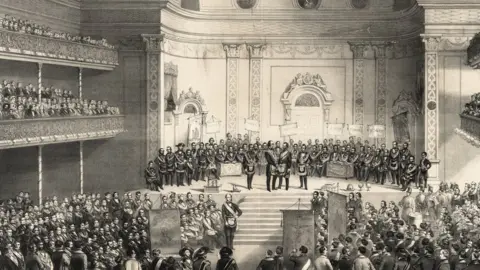Simple Steps You Must Follow for How to Become a Freemason Now
Simple Steps You Must Follow for How to Become a Freemason Now
Blog Article
Checking Out the Mysteries of the Freemason: What You Need to Know
The Freemason, a term often shrouded in intrigue and controversy, represents a complex tapestry of historical fact and modern myth. Established in the late 18th century, this secret society was initially rooted in the Knowledge's perfects yet has actually given that come to be identified with conspiracy theory theories about elite control. As we navigate the beginnings, vital numbers, and the plain contrast between myth and fact, one have to take into consideration exactly how these narratives influence modern assumptions of power and secrecy. What might be revealed via a more detailed assessment of these elements could test long-held presumptions about the darkness that stick around in our society.
Beginnings of the Freemason
The origins of the Freemason are soaked in a blend of historical intrigue and ideological eagerness. Established in 1776 in Ingolstadt, Bavaria, by Adam Weishaupt, the team was originally developed as a secret culture focused on promoting Knowledge ideals such as reason, secularism, and the splitting up of church and state. Weishaupt, a professor of canon legislation, looked for to challenge the dominating authority of the church and state, which he considered as oppressive organizations stifling intellectual and personal liberty.
The Freemason looked for to recruit prominent participants from various societal markets, consisting of politics, academia, and the arts, to promote a network committed to these Enlightenment principles. The society run under a shroud of privacy, employing coded language and rituals to safeguard its members from mistreatment, specifically given the repressive climate of the time. Nevertheless, the Freemason encountered substantial opposition from both governmental authorities and religious organizations, which checked out the team as a hazard to their power.
Secret Figures and Members
Who were the pivotal numbers that formed the Freemason's early influence and instructions? The Bavarian Freemason, started in 1776 by Adam Weishaupt, emerged as a reaction to the oppressive social structures of the time.
Another significant number was Johann Gottlieb Fichte, a famous philosopher whose concepts on nationalism and education and learning resonated with the Freemason's goals. Although Fichte was not an official participant, his philosophical supports affected the group's ideological background. Additionally, numbers like the writer and theorist Johann Wolfgang von Goethe were connected with the broader intellectual motions of the moment, although their direct participation with the Freemason remains questioned.
These crucial figures added to the Freemason's early instructions, pushing the boundaries of political and social idea, while their collective initiatives aimed to challenge established standards and foster an environment of progressive modification in Europe.
Myths vs. Truth
Many mistaken beliefs border the Freemason, frequently mixing fact with fiction in a means that obscures its true nature. This secret culture, originally established in 1776 in Bavaria, intended to promote Knowledge ideals and battle spiritual and political oppression. The concept that the Freemason proceeds to exert considerable impact over world events is a misconception. While the team did exist, it was disbanded in the late 18th century and has not run as a natural entity ever since.
An additional widespread myth is that the Freemason comprises a network of elite individuals controling international top article events. Actually, many conspiracy theories exaggerate the team's relevance, connecting unfounded motives to societal trends and events. This has led to an oversimplified view of complex problems.

Modern Analyses
Contemporary analyses of the Freemason typically show more comprehensive social anxiousness and an attraction with privacy and power. This modern lens frequently associates the Freemason with conspiracy theories that recommend a hidden elite orchestrates world events, manipulating governments and economies for their own More hints gain. Such stories use an ingrained question of authority, specifically in times of situation or social turmoil.

Additionally, some contemporary interpretations frame the Freemason as a metaphor for the intricacies of globalization and the interconnectedness of significant people and companies. This point of view motivates a vital evaluation of how power characteristics run in today's world, highlighting the balance between openness and privacy in governance and corporate techniques.
Social Effect and Legacy
Influenced by centuries of intrigue, the social influence and tradition of the Freemason extend much past its historical beginnings. This secret culture, established in the late 18th century, has penetrated different facets of pop culture, from literature and movie to songs and art. The concept of the Freemason has actually progressed into an icon of conspiracy theory theories, usually standing for a perceived surprise power controling global occasions.
In literature, authors like Dan Brown have actually woven the Freemason into complex plots, exciting visitors with motifs of secrecy and power. Movies such as "National Treasure" and "The Da Vinci Code" further continue the allure of the culture, blending truth with fiction to create appealing narratives.
The Freemason's impact also prolongs right into music, with musicians referencing the organization to stimulate motifs of rebellion and social critique. This representation has actually contributed to an attraction with the idea of private teams controlling the bars of power, reflecting societal anxiousness regarding authority and openness.
Ultimately, the Freemason's tradition is an intricate tapestry of myth and truth, forming perceptions of privacy and control in modern discourse. Its enduring visibility in society highlights mankind's seasonal quest for comprehending surprise truths.
Final Thought
The expedition of the Freemason discloses a complex interplay in between historic realities and modern myth-making. Established in the Knowledge period, this culture aimed to challenge oppressive structures, yet its tradition has actually been outweighed by conspiracy theories that suggest elite control. Recognizing the differences in between the original ideals and contemporary interpretations is necessary for understanding the sustaining attraction with the Freemason and its significant influence on cultural narratives surrounding power and secrecy in society.
Report this page